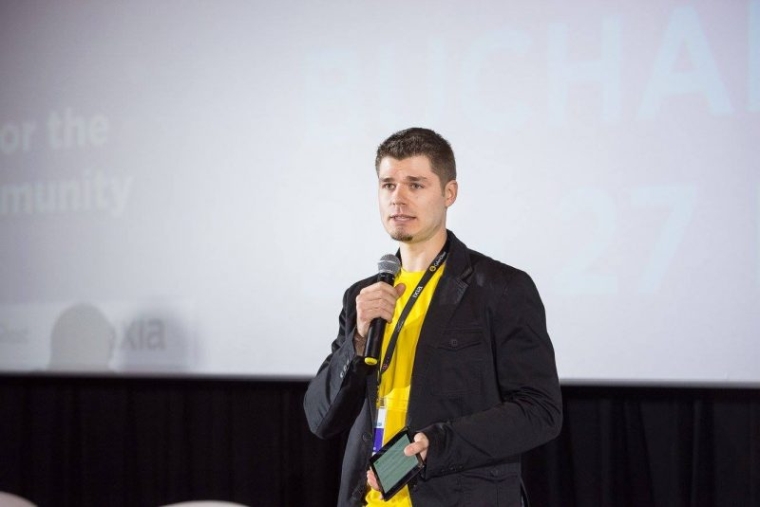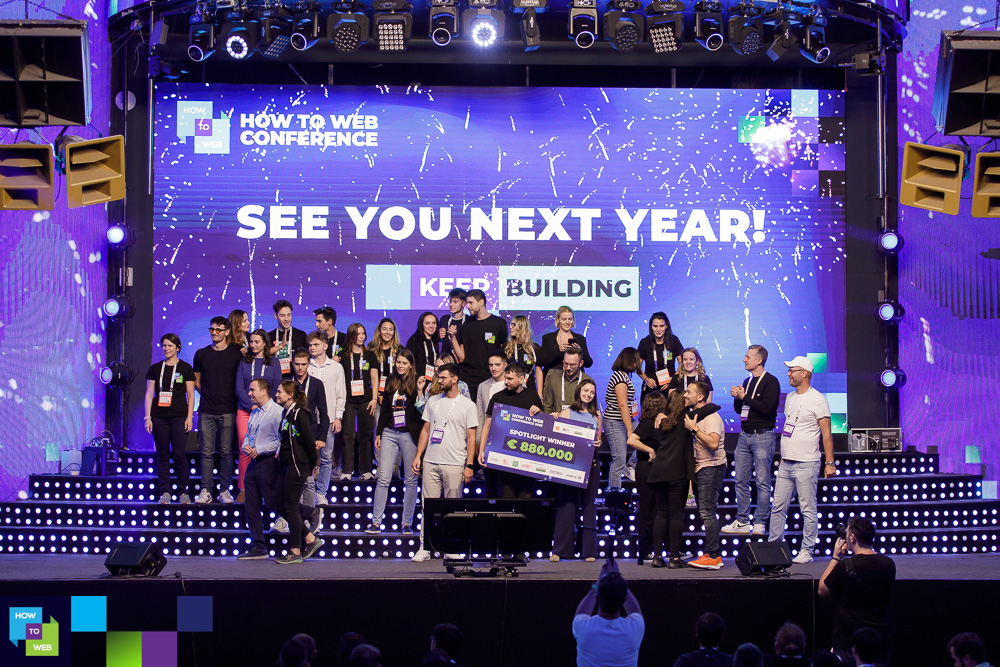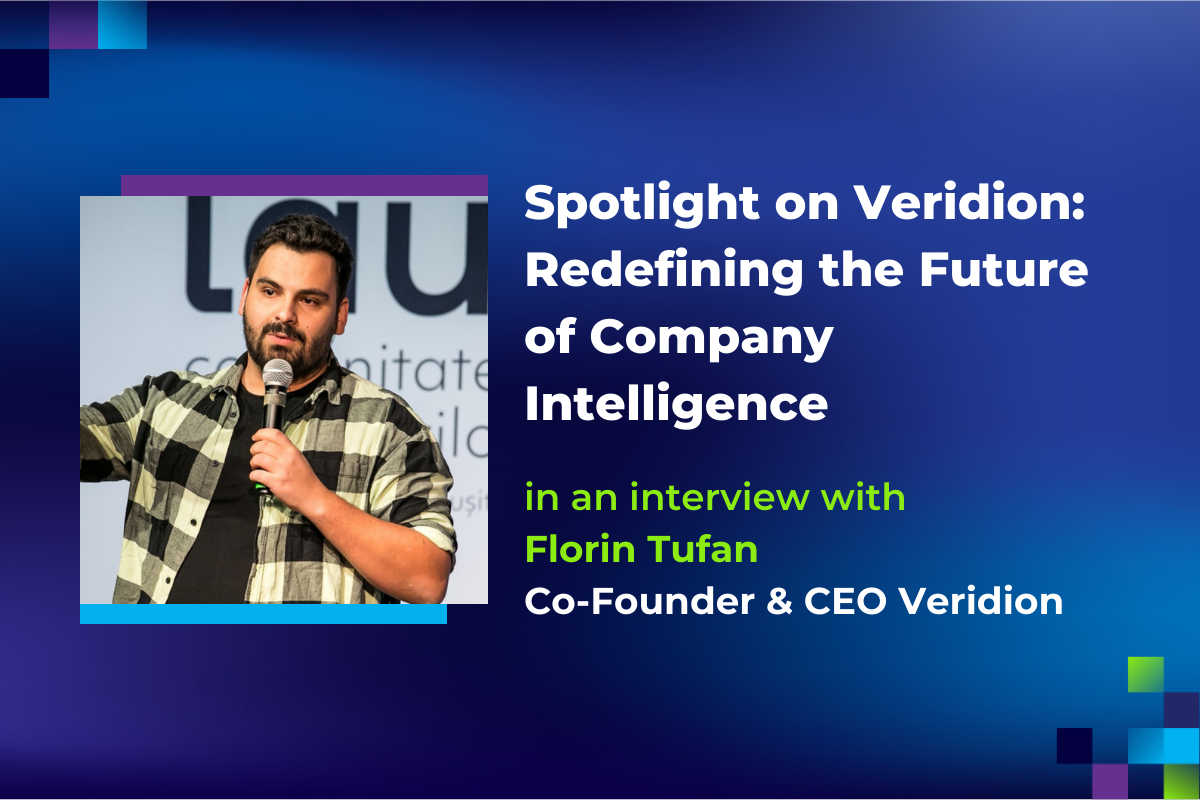11 February, 2018

In December 2017, Appticles announced the winning of a $50k grant from the Google Digital News Initiative, in support of building their new product, MorphL – AI-driven UI.
Ciprian and Alexandra, Appticles’s founders, are well-known figures in the Romanian startup ecosystem – first Romanian entrepreneurs to join Startup Bootcamp in 2010, organisers of the Bucharest JavaScript community, one of the biggest active meetups in Bucharest, speakers to dozens of events, from Startup Weekend to Wordcamp. We were curious to find out more about their experience getting the grant and their future plans, so we had a chat with Ciprian.
Q1: What is Appticles and how did you come up with the idea for your newly announced project, MorphL?
Appticles is a multi-channel mobile publishing platform that consists of a suite of micro products that empower digital businesses and their development teams to easily build mobile applications and grow their engagement rates. Users can purchase individual licenses for any of our products ($9 to $49) or purchase them as bundles ($99 to $499).
Over the years we developed a lot of mobile user interfaces and iteration after iteration we identified some common patterns that, properly implemented, have the potential to speed up the process of getting from an initial user interface to the ultimate user experience. In essence that’s the idea behind MorphL – a machine learning platform that empowers digital publishers to optimize engagement and conversion rates by predicting how users will interact with a user interface (UI).
Being awarded the Google Digital News Innovation grant of 50,000 EUR comes as a validation of the potential impact it can have on the publishing industry in particular, and for modern UI development in general. We strongly believe that we can grow MorphL as an open source initiative, inviting passionate developers to collaborate and contribute to a project that has the potential to lay the foundation of modern UI development: from responsiveness to progressiveness onto … morphism – the ability of a page/app to automatically adapt to user behaviours.
Q2: What is MorphL and how does it help publishers?
The process of developing even the simplest of digital products usually consists of a few important phases: planning, design, development, and launch. Once launched, various experiments are conducted with the goal of testing special features and interactivity and the results are fed back to the marketer who needs to interpret the data, then to the designer who delivers a visual representation which gets developed and implemented into the product. MorphL comes in the middle of it all and automates the repetitive work involved in these multiple iterations, thus speeding up the entire process to discover the optimum UI for the product. We’re not eliminating any of the critical roles involved in product development, we’re simply augmenting their capabilities by feeding real, unbiased data into the whole process.
MorphL will record various UI micro-metrics and automatically test different variations to identify the optimum combination that produces the best results. By doing this, it’s like having a 24/7 in-house R&D department keeping the application’s UI relevant and engaging, allowing digital publishers to do what they do best: create quality content.
Do we envision a future where such a platform can be fed a bunch of building blocks and given enough data & time it could foster, on its own, a product with the perfect UI? Certainly.
That’s why the publishing industry is one of the areas we’re going to pilot MorphL first, given the Google DNI focus. However, I should say that this is particularly interesting for enterprise publishers, especially those that have a deep e-commerce integration in their digital products.
Q3: What was your experience applying for the Google Digital News Initiative grant?
Google Digital News Initiative started almost 3 years ago and during this time we applied 3 times.
The application process was pretty straight forward. Besides basic information about the company and project, Google DNI is interested in finding out how the project support and stimulate innovation in digital news journalism and why does it have an impact.
It’s important to note that Google DNI is going to release the grant based on 2 major milestones (maximum number of milestones allowed for a prototype project).
After multiple applications we finally got shortlisted for an intermediary interview. This was a 15 minute Hangouts conversation with one of their external project team member – obviously there’s not a lot of time to really get into details, but they simply want to be understand if the project has the potential to impact the digital news space. Unfortunately, we didn’t get in the first time we got shortlisted.
We later found out from their Google DNI event that took place in Bucharest that a particular attention is given to partnership projects, meaning collaboration between a publishing house and a startup in the space. That’s why we proposed the idea to PressOne.ro and, ultimately, that’s what I believe got us the grant.
Q4: What does being part of the Google Digital News Initiative mean on the long run?
The Digital News Initiative (DNI) Innovation Fund is committing €150m to spark new thinking and give European news organizations of all sizes the space to try some new things, experiment and innovate in the digital space. There are 3 funding tracks: prototype projects (up to €50k of funding), medium projects (up to €300k of funding) and large projects (more than €300k of funding).
Google DNI is not an accelerator, but they do organize events/workshops from time to time and we have the option to attend. I think the value that comes with the €50,000 grant is mostly in the network of big publishing companies in Europe that we’ll be exposed to.
Q5: How do you plan to develop MorhpL and align the project with your day-to-day work at Appticles?
We’d like for MorphL to have a strong open source presence, that’s why we’re going to be transparent with our roadmap and progress on our GitHub repos and our Medium blog. We’re aiming for our first release in May 2018.
Appticles already has an established user base and we’re going to continue working on improving our products. MorphL on the other hand is going to be developed as an open-source project.
We realize that managing both Appticles and MorphL at the same time is challenging, but our assumption is that we’ll manage to grow a core team at MorphL that will develop this project in the months to come.
You may also like
How to Web 2023 brought together over 2,500 international participants, 60 global speakers, and an investment prize of €880,000 for the best Eastern European startup
In December 2017, Appticles announced the winning of a $50k grant from the Google Digital News Initiative, in support of building their new product, MorphL – AI-driven UI. Ciprian and Alexandra, Appticles’s founders, are well-known figures in the Romanian startup ecosystem – first Romanian entrepreneurs to join Startup Bootcamp in 2010, organisers of the Bucharest… Read more »
0Spotlight on Veridion: Redefining the Future of Company Intelligence
In December 2017, Appticles announced the winning of a $50k grant from the Google Digital News Initiative, in support of building their new product, MorphL – AI-driven UI. Ciprian and Alexandra, Appticles’s founders, are well-known figures in the Romanian startup ecosystem – first Romanian entrepreneurs to join Startup Bootcamp in 2010, organisers of the Bucharest… Read more »
0


